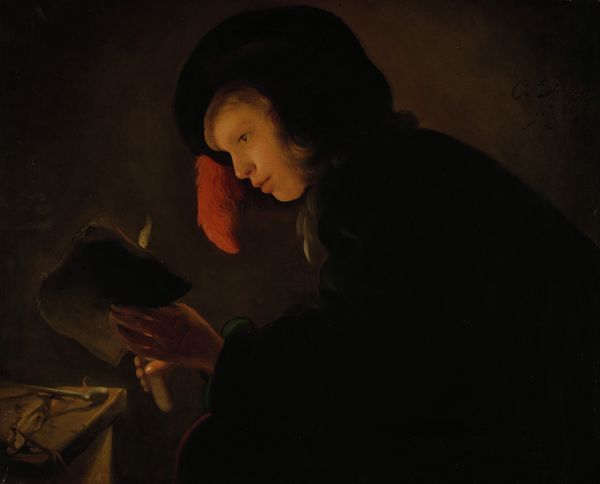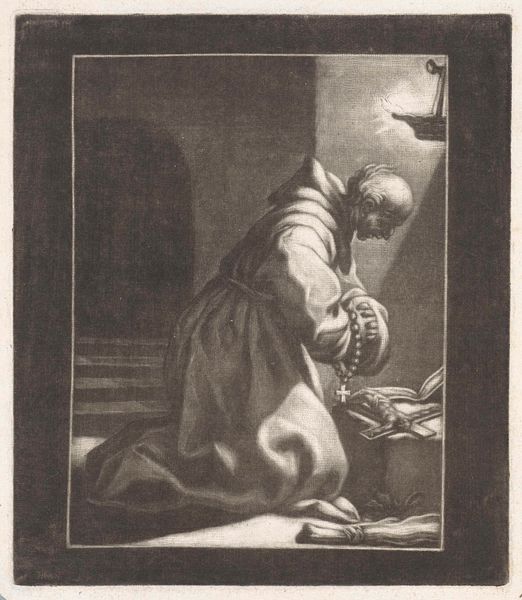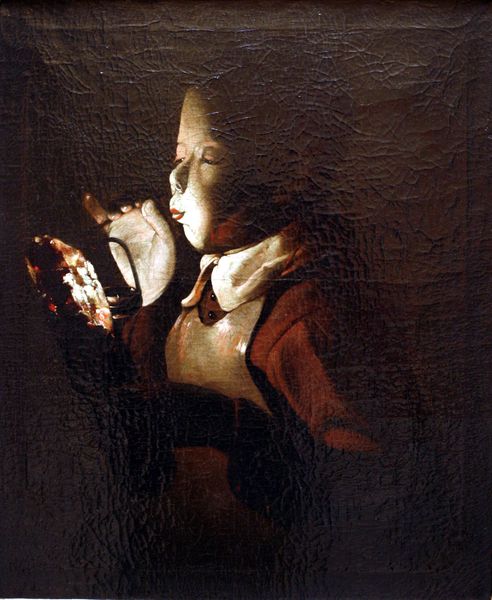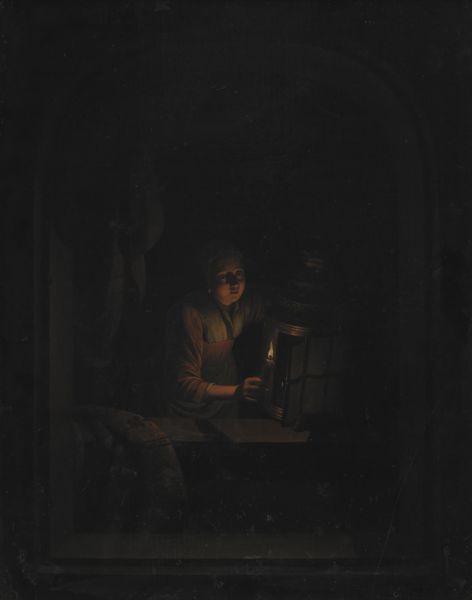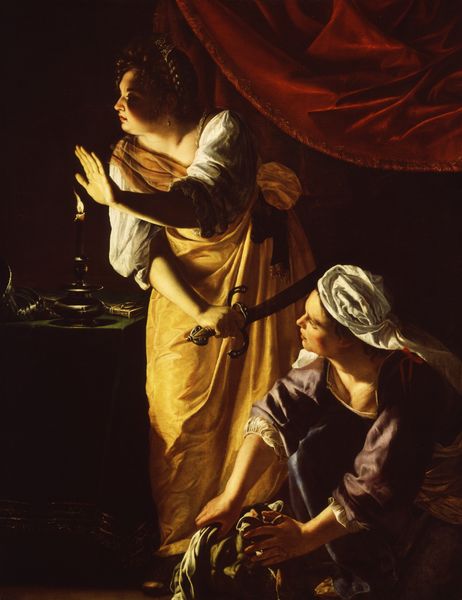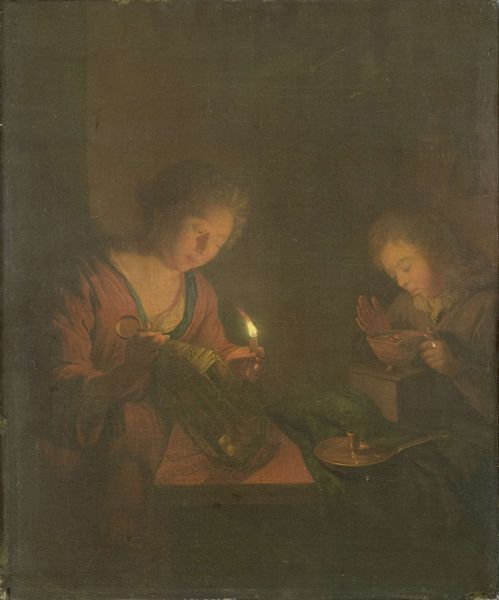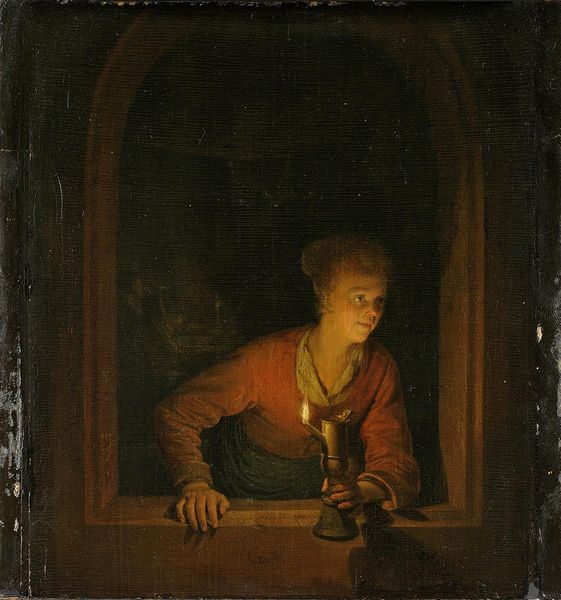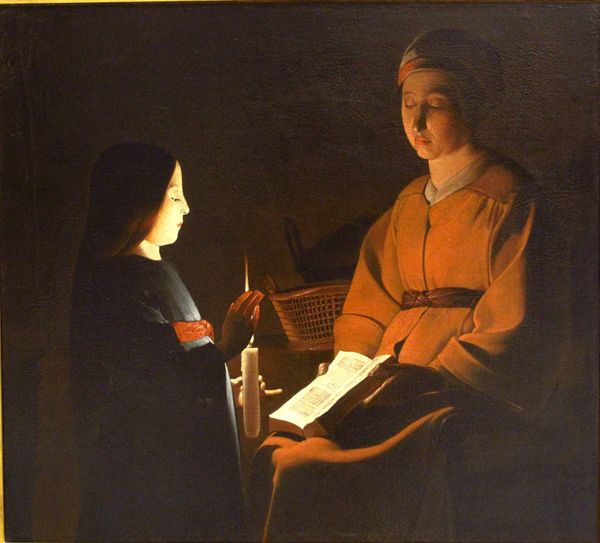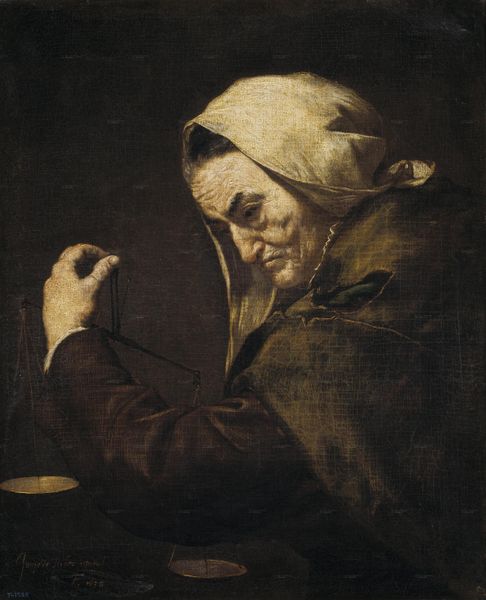
Repenting Magdalene, also called Magdalene before Mirror or Magadalene Fabius. 1630
0:00
0:00
oil-paint
#
portrait
#
baroque
#
oil-paint
#
vanitas
#
chiaroscuro
Copyright: Public domain
Curator: I’m struck by the overwhelming stillness in this piece, "Repenting Magdalene, also called Magdalene before Mirror or Magdalene Fabius", created by Georges de la Tour around 1630. It's almost a hushed reverence permeates the space. Editor: Yes, there is an incredible intimacy created through that intense chiaroscuro. The darkness practically swallows everything except for what’s illuminated by the single candle. It amplifies the solitude. Curator: Indeed. La Tour was known for his mastery of light and shadow, a hallmark of the Baroque. Beyond the aesthetic choices, this stylistic move contributes significantly to our reading of it in relation to the socio-religious role of art at the time. This type of art allowed the viewer to emotionally relate to the narrative unfolding. Editor: And the symbolism is so overt! It hits hard. The skull, of course, a memento mori, is juxtaposed against Magdalene, her downcast gaze and somber expression signalling repentance. It speaks volumes about the pressures and expectations imposed on women, especially regarding their bodies and desires. It reminds us that they lived under a near constant public judgment. Curator: Exactly! This wasn’t just about religious devotion, it was a broader commentary on morality, accessible to the audiences viewing it within specific societal and political contexts. The small mirror reflecting the skull serves to double the painting’s message about the passage of time and how we should live to assure redemption after death. Editor: It’s not hard to imagine the contemporary gaze lingering judgmentally on depictions of the Magdalene throughout art history. We see her both as the sensual sinner and the devoted follower, often positioned for male viewership, until we engage a bit of intersectional thinking. Here, though, La Tour invites us into Magdalene's personal reckoning. Her sorrow is palpable, and it's less about voyeurism and more about contemplation. Curator: It serves as a reminder that while art holds immense aesthetic and emotional power, understanding its socio-historical roots is crucial for a fuller appreciation of its complexities and intended impact. Editor: Right. I walked into this viewing assuming I was ready to unpack certain gendered and patriarchal assumptions in order to re-appropriate the art. But instead I left simply empathizing with this lone woman.
Comments
No comments
Be the first to comment and join the conversation on the ultimate creative platform.




